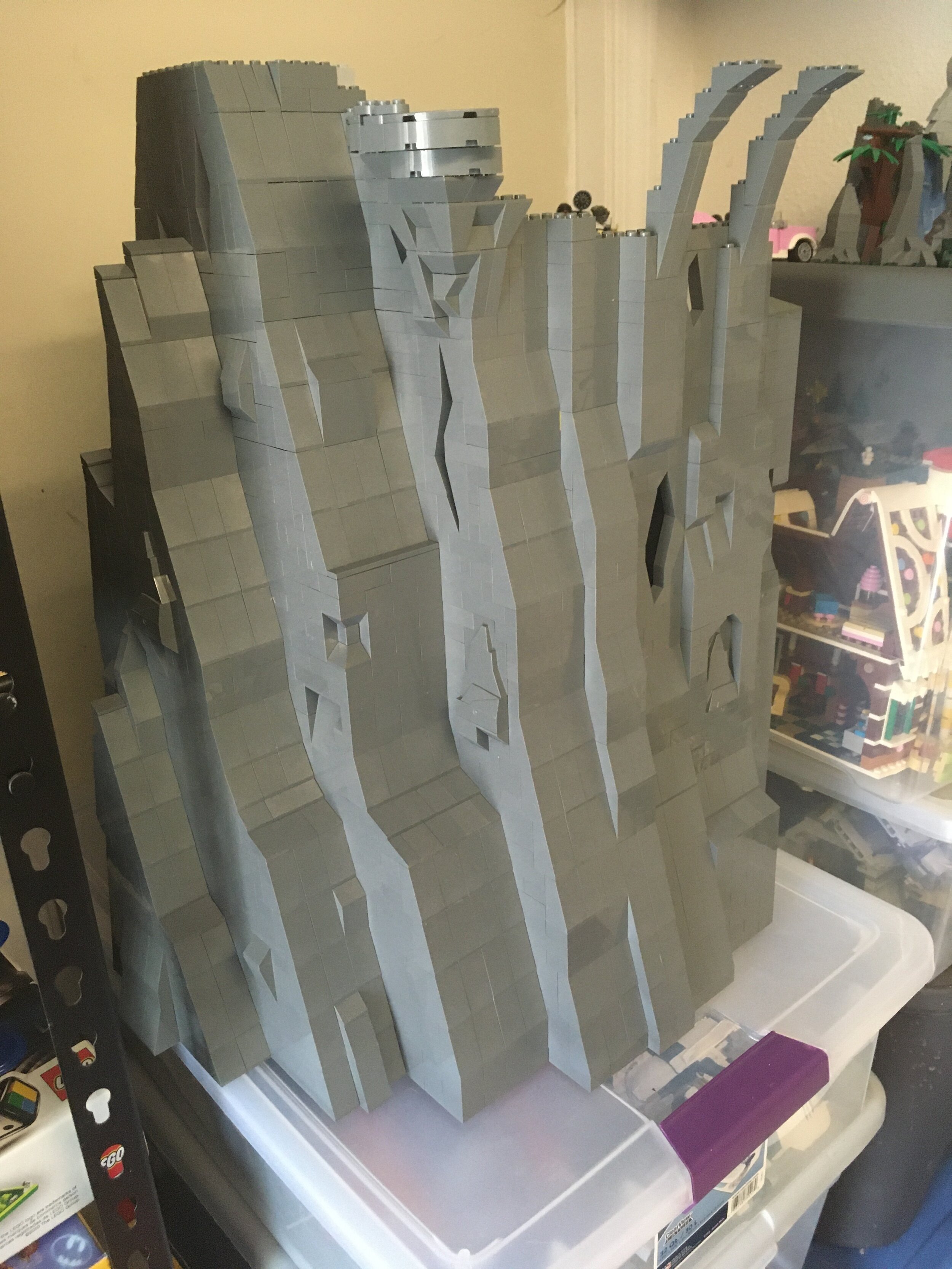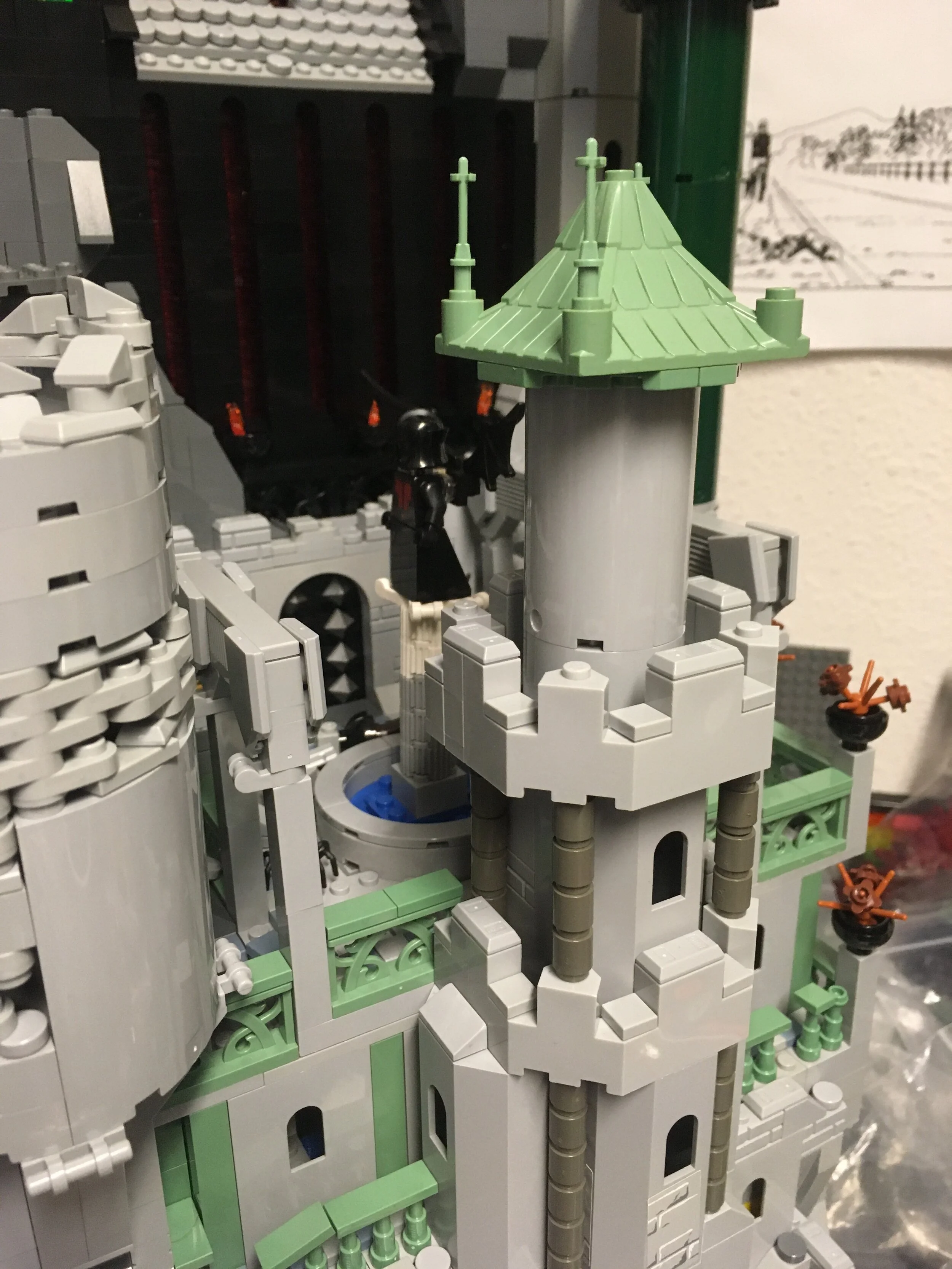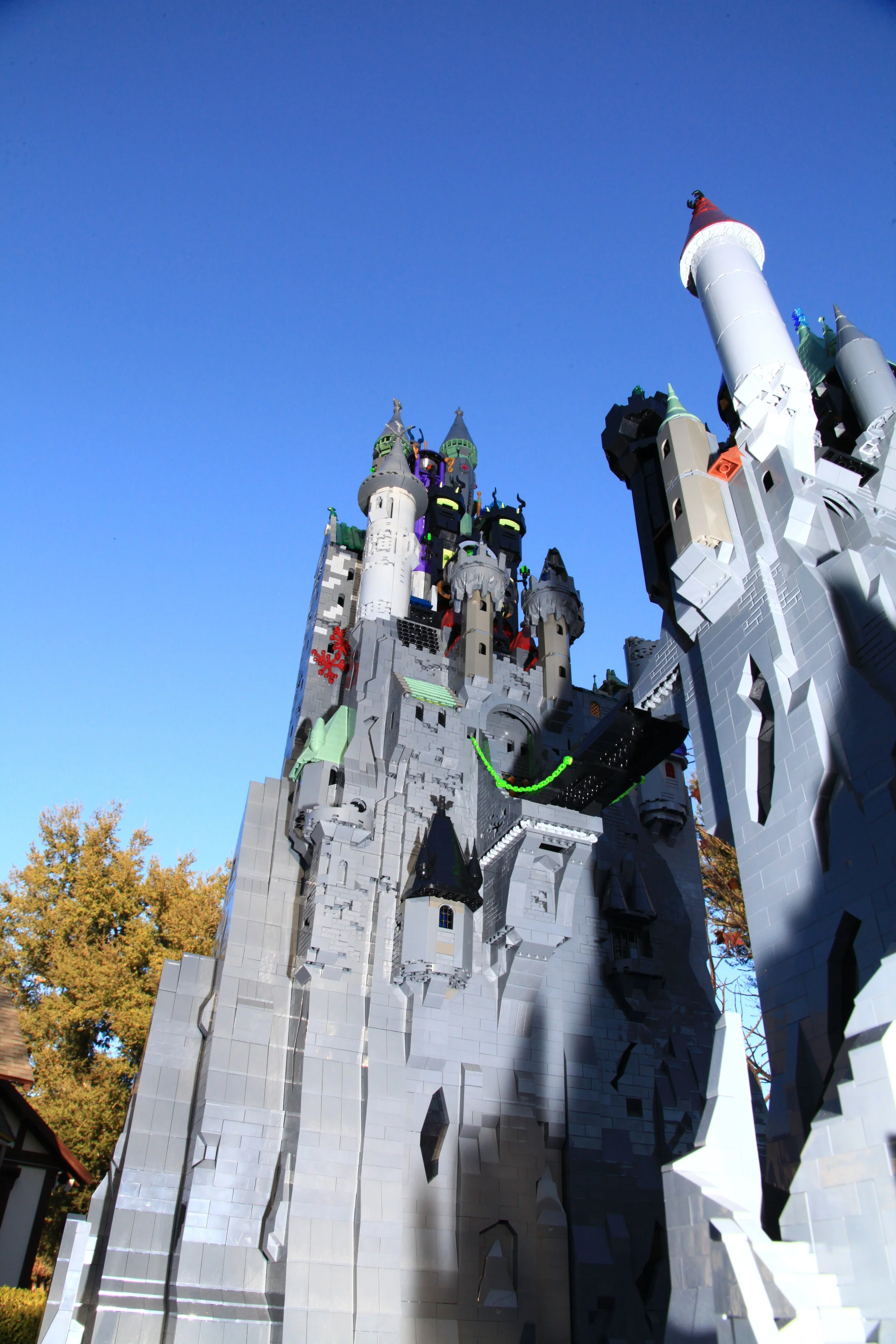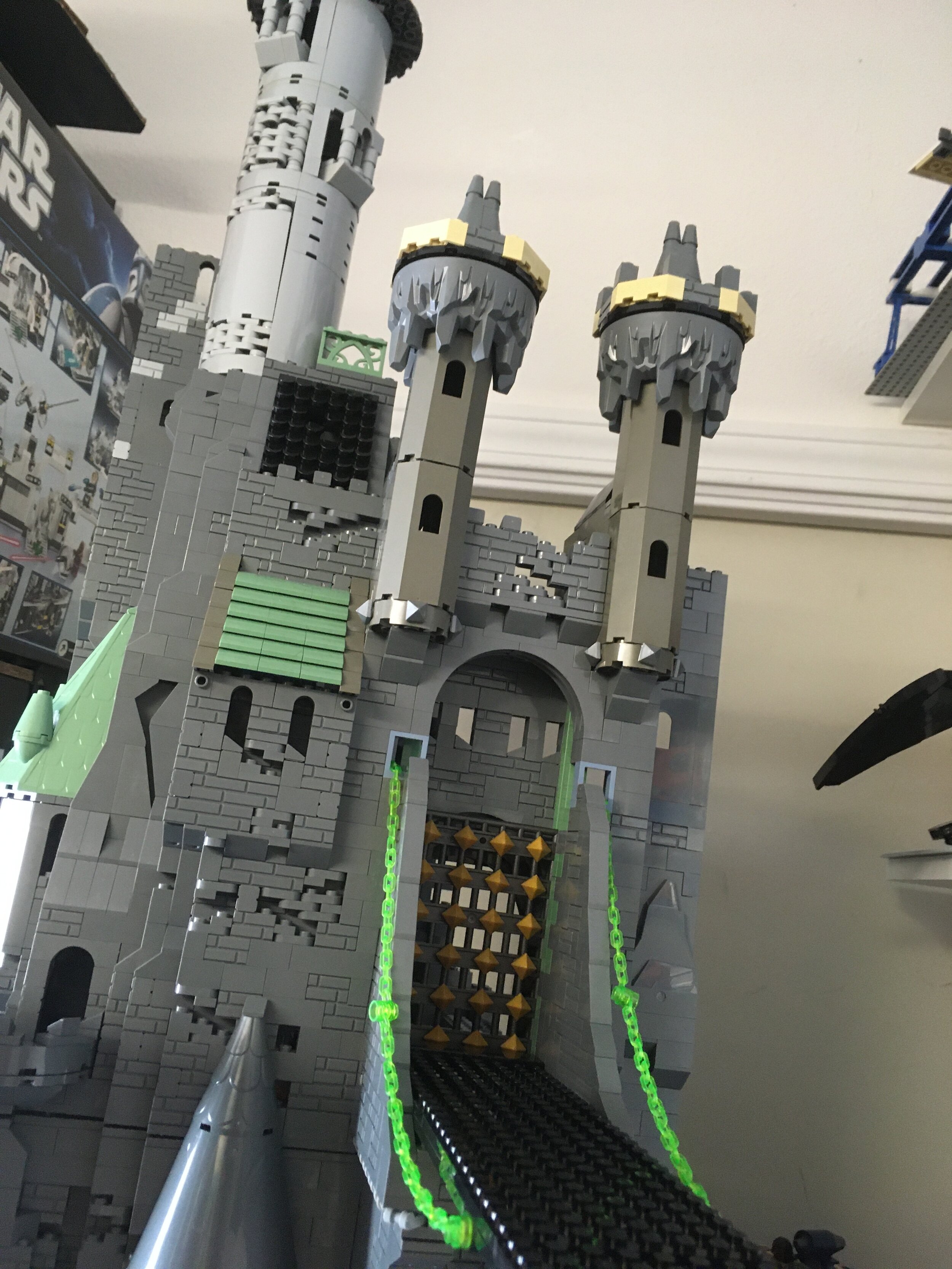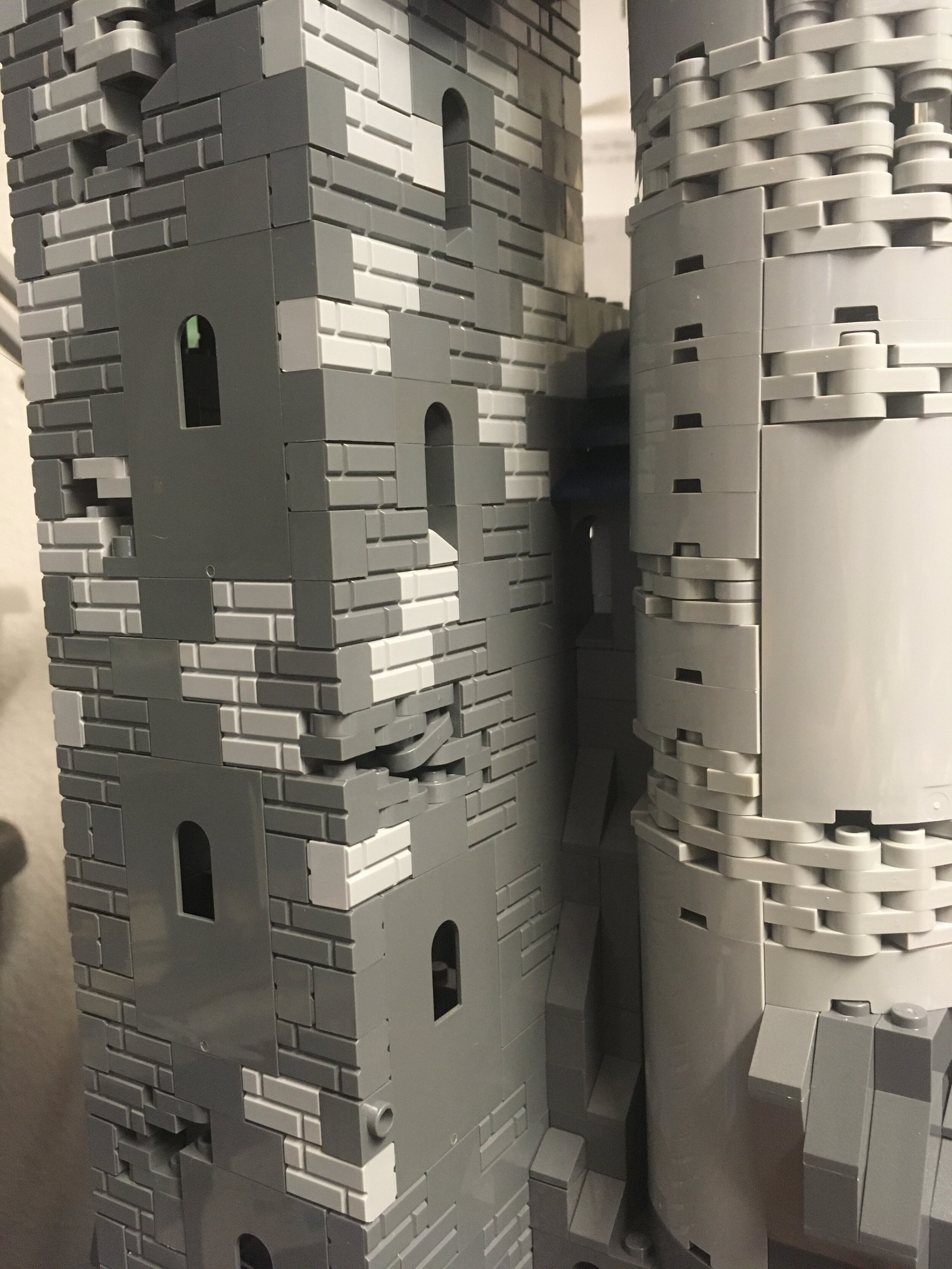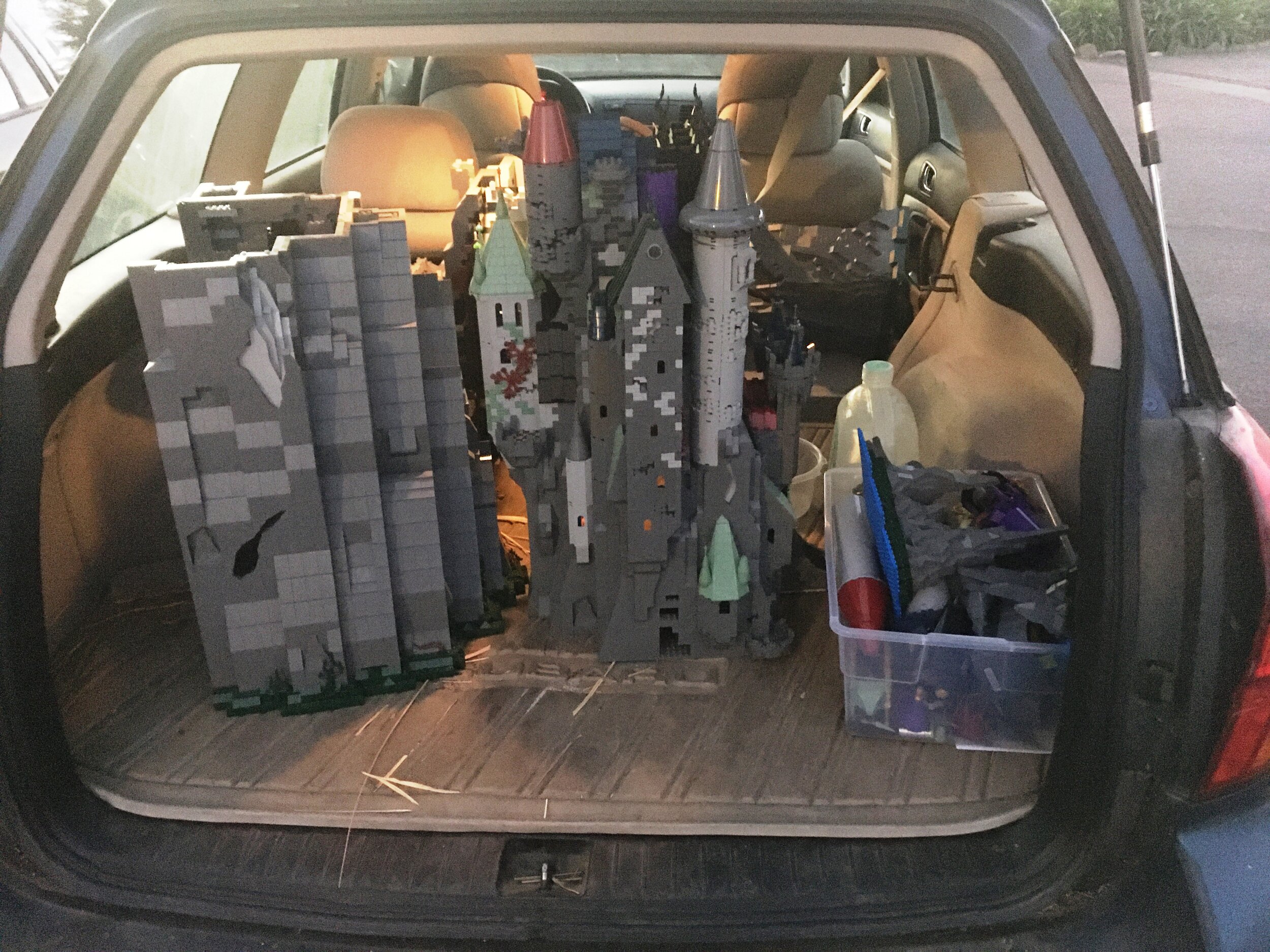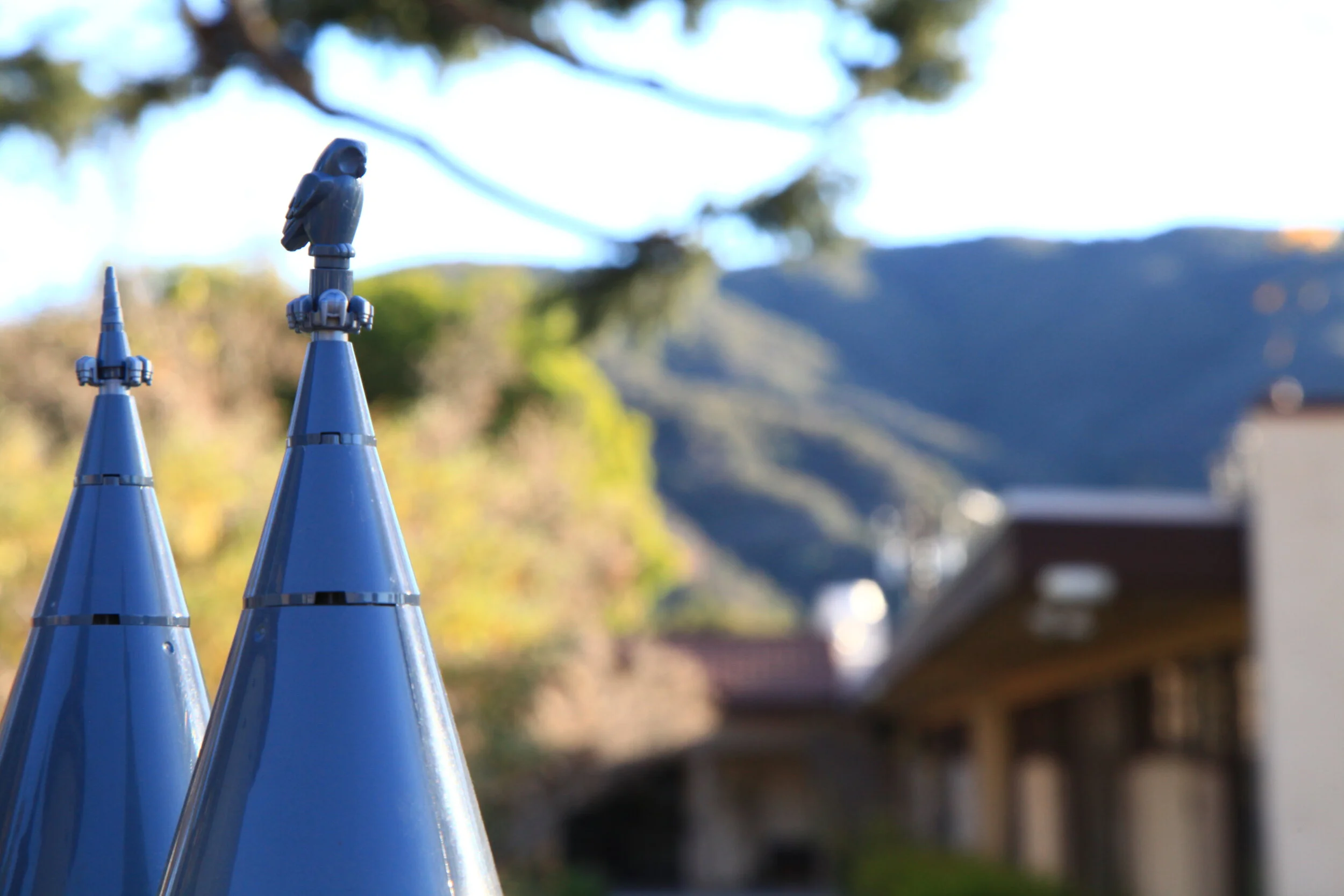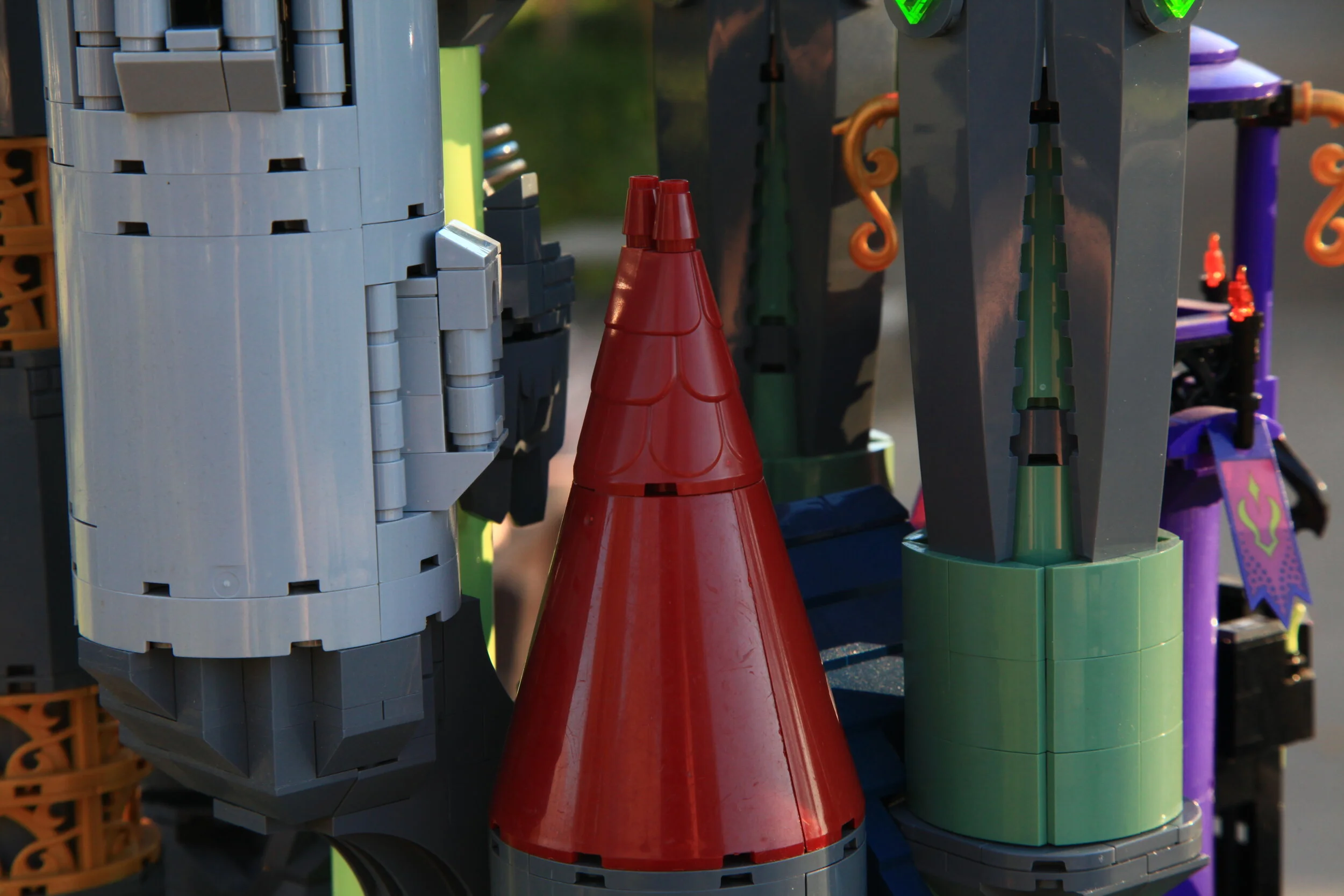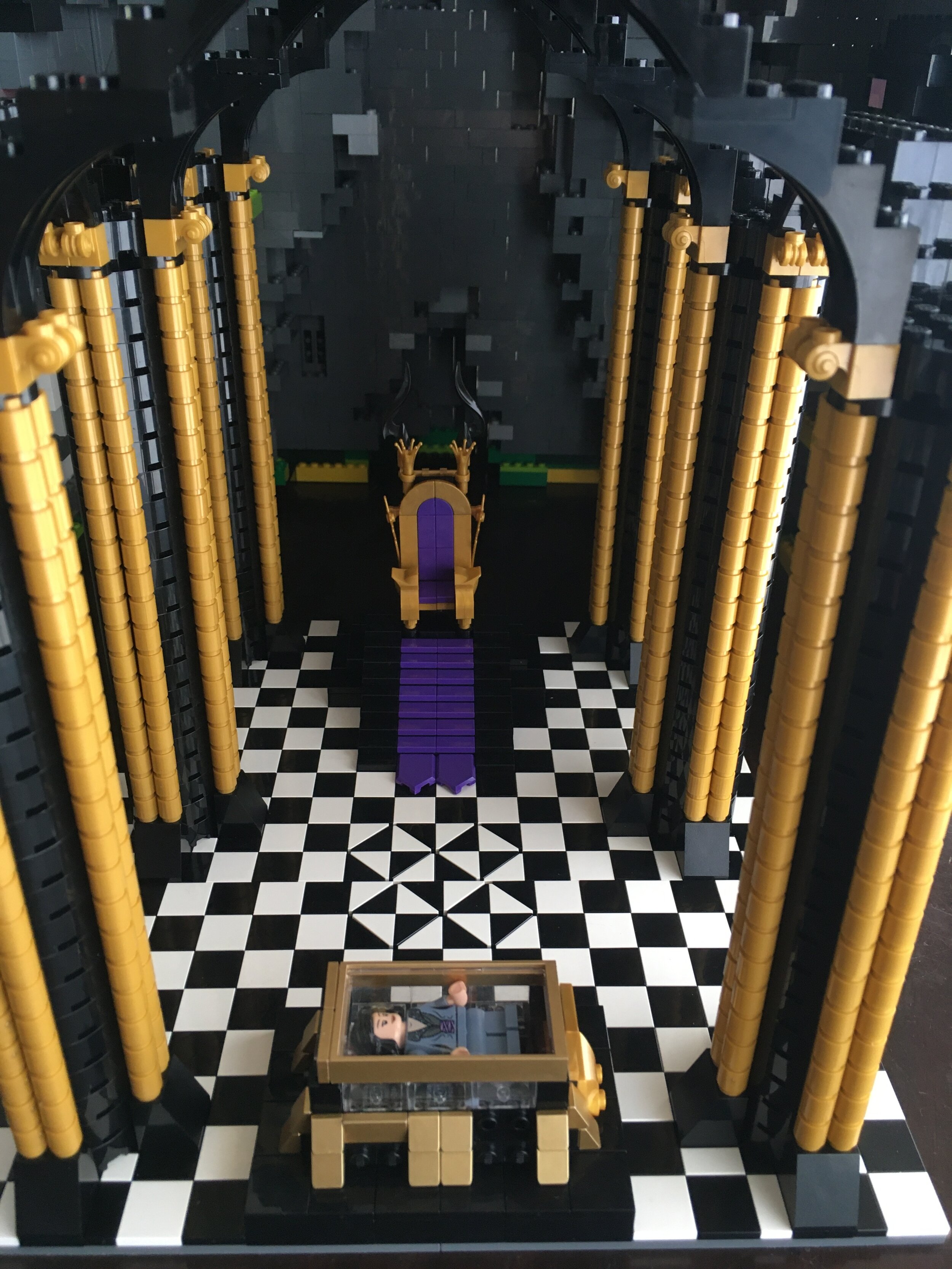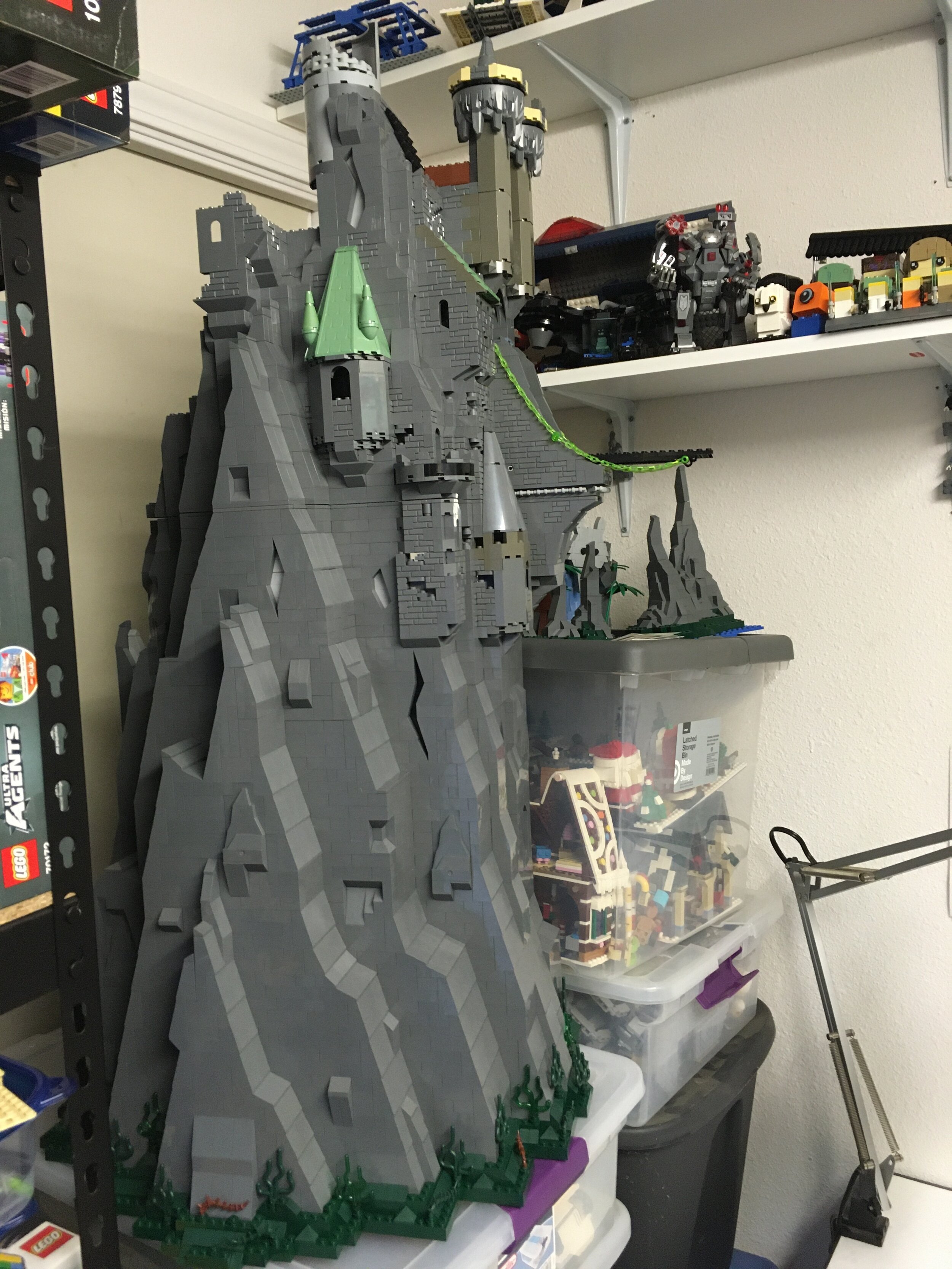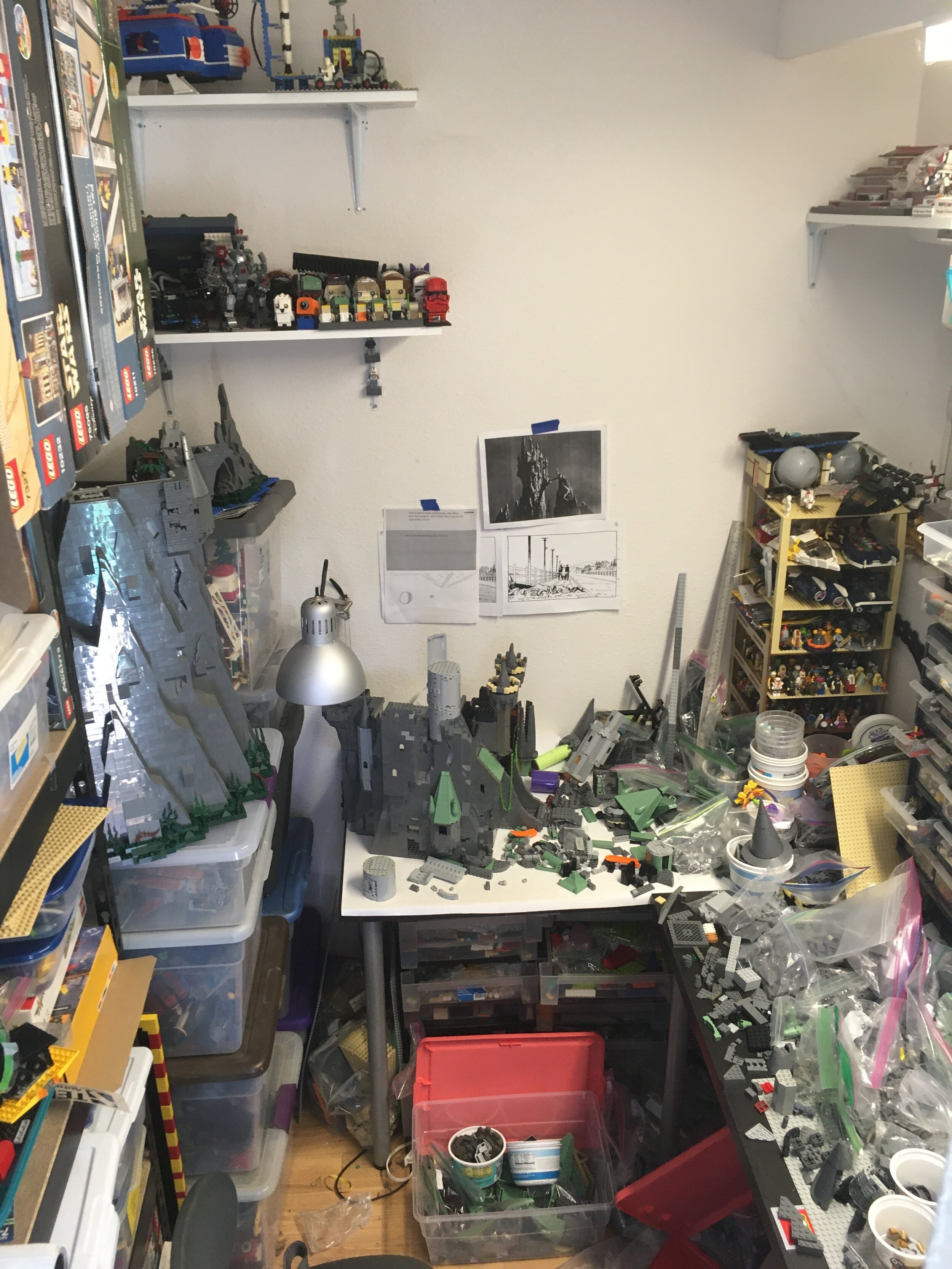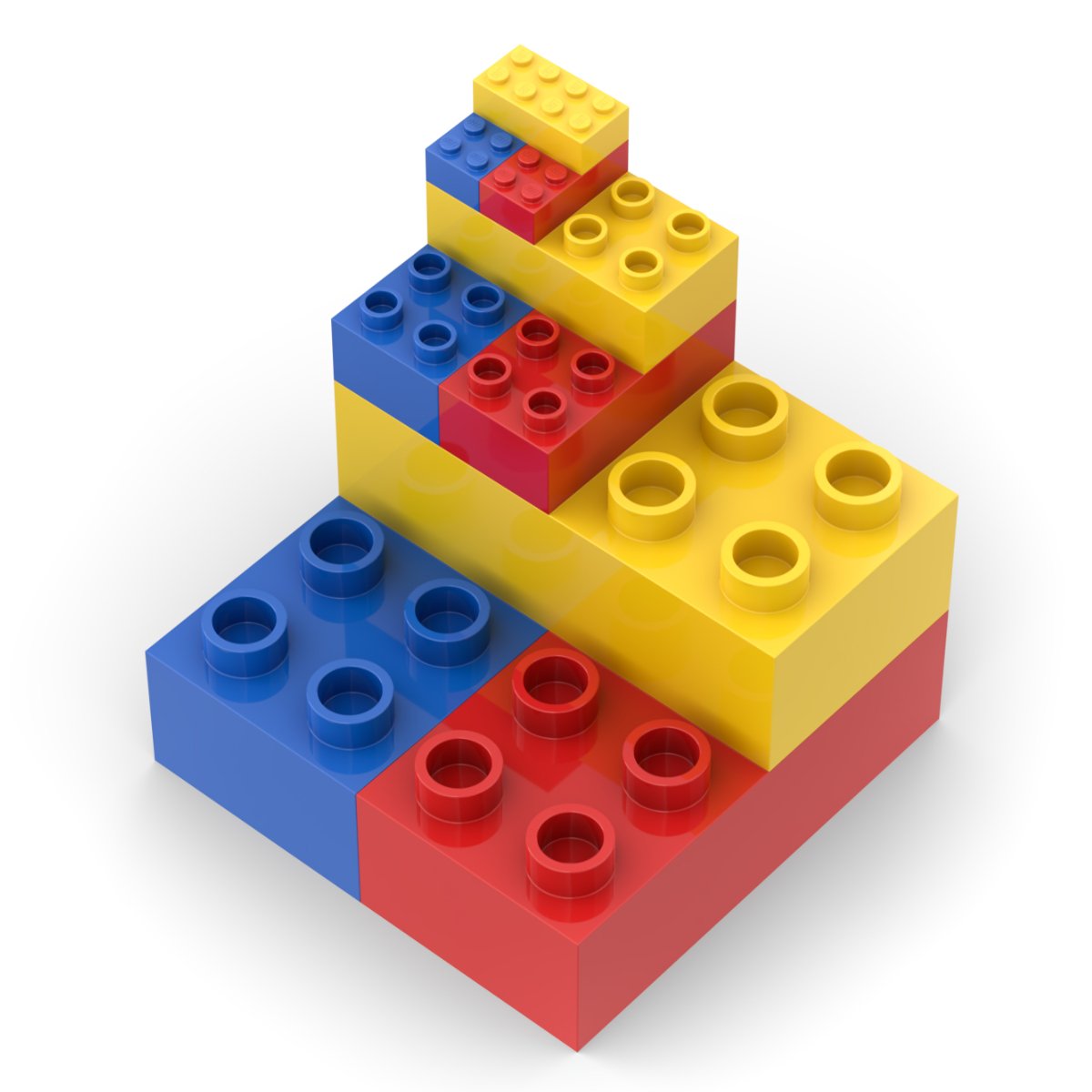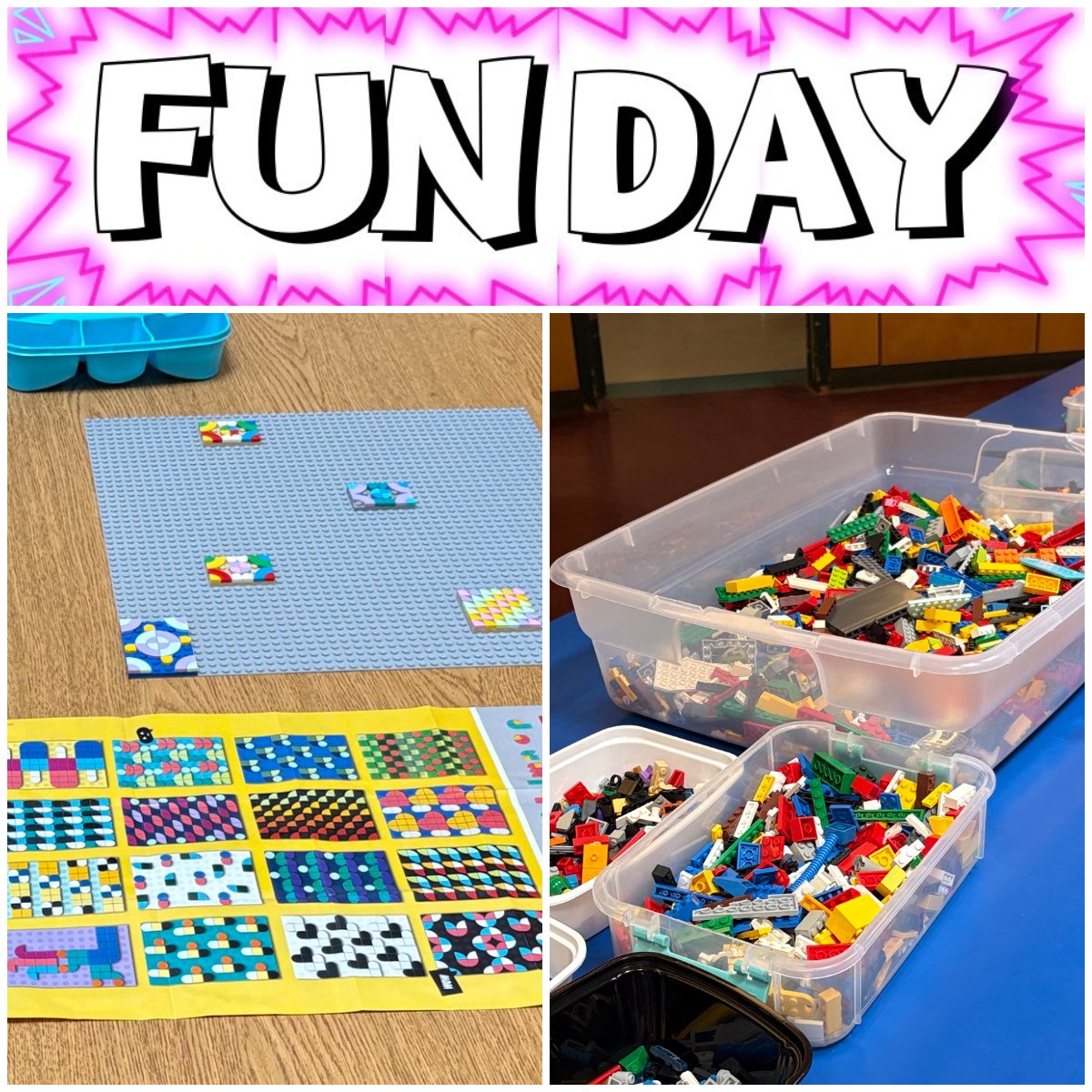Of Spindles and Spires: An Interview with Chris Wight
/LEGO builder Chris Wight hails from Melbourne, Australia but has been building his presence in Southern California for over a decade. You may have seen his giant Steampunk Wheel on The Brothers Brick a few years back. He has been wowing Bricks LA audiences with Frank Lloyd Wright, Star Wars, and movie poster MOCs in the years since. Continuing on in his LEGO building, last year in lockdown he created a ginormous creation worth every brick: “Maleficent’s Castle.”
Virtual LEGO conventions are doing their best to keep the AFOL spirit alive, but personally, there’s just something I miss about watching an enormous MOC come to life in a convention hall—and also scanning the tables for less assuming hidden treasures. To me, photos can’t replace seeing a MOC in person, especially ones of this size and craftsmanship. I had been privy to the progress of this stunning MOC through photographs, but I was compelled to speak with Chris about his process to breathe more life into this physically amazing MOC which has as of yet only been seen through photos.
Gwyneth: Let’s start at the beginning. This castle is epic! What are the actual dimensions, and did you start off knowing it would be this huge, or did it get out of hand?
Chris: It’s about 2 feet by 3 feet at the base (the main part is about 2x2). Height is about 5 feet, 6 inches. It definitely got out of hand. Originally, I thought it might reach 4 feet max, and the back was going to be open with the throne room interior. But to get enough vertical rise to give several layers of jagged rock from at least three sides and then have room for a cluster of towers… well it grew. As usual with my work, I think I restarted the base three times before I was happy.
Gwyneth: When did you first come up with the idea?
Chris: The idea inspiration pretty much came as soon as I opened my Maleficent Collectible Minifigure... so that’s 2016. Then I bought up bulk dark bley (blueish-grey) 2x2s, 2x4s, 2x6s on the LEGO Store’s Pick-a-Brick wall (PAB), and slipped some dark bley slopes into a few LUGBULK orders. The building commenced in 2020.
Gwyneth: So it was four years of pondering design and accumulating parts? When in 2020 did you begin? And how did covid affect the build?
Chris: I think I started building at the start of March, and it was about 75% done by the end of April. Early Covid gave me lots of lockdown time to work on it. But, as it grew and I decided to build the back half, I ran out of parts. During lockdown, there were no PAB walls open, and there was a big run on BrickLink. So I bought a lot of parts on LEGO.com, but that had about a six-week delivery time. Building moved very slowly between April and September. I think it was 99% done by October, but then I had to sit on it in secret until Bricks LA. (I didn’t want to spoil my own work.)
Gwyneth: That sounds incredibly frustrating to build in fits and bursts. How did you estimate the parts you might need?
Chris: Sometimes I do a rough calculation to guesstimate an expensive part—for example, I worked out that I would need 300 of the 2x2x3 dark bley slopes. I ended needing about double that, but at least I got the first 400 on LUGBULK, so it lessened the overall cost a lot. The 2x4s were from the PAB wall so I just had, like, three or four 2-gallon zip locks, but I ran out of those and bought a couple hundred more at 20 cents each from LEGO.com.
I also build, in part, to the pieces I have. I had a lot of light bley, so the back courtyard section and castle bit is in light bley to kind of make it look like it’s emerging from the dark bley rock. I might have gone a different way if I had access to PAB or more dark bley—but design-wise, I wanted the contrast, anyways. It was getting very dark, with all that dark bley! I added a lot more color to the top of the towers than originally planned, too. It needed it.
Gwyneth: So, it seems your original estimates mostly needed to be doubled.
Chris: Only the major bulk parts were “doubled” (probably +50% really). I actually ended up with lots of leftovers from planning all the detail for towers and rooms. I had stockpiled a bunch of the LEGO Elves Goblin King Fortress (set 41188), and I didn’t use a couple of them at all. Really, it was a factor of needing to increase the base to get the height and doing the back section.
Gwyneth: Were there times when you wished you had laid it out digitally to start?
Chris: No, I don’t design that way—I get an idea in my head, draw a few crappy sketches, and then I work with the bricks. I’m probably good at visualizing what I’m going to do but I also often start and tear down and restart the big models a few times. I think I started the base three times on this one before I was happy. I’m a qualified architect (not practicing), and that background helps me in these things.
LUGOLA is currently working on a project with CHLA hospital, and it is the first time I’ve made a model in LEGO Digital Designer (LDD) before building—in part because it needed an accurate parts list for ordering. If it was a commission, I wouldn’t have done that. At most, I only design little sections in LDD to test ideas or I build them in LDD after the fact so I can copy them later if I decide to sell the originals (e.g. BrickHeadz).
Gwyneth: Are you accustomed to building at such a large scale?
Chris: Yes. In fact, quite a few of my MOCs in recent years have all been pretty big. Some deliberately so, and others, similarly, got out of hand.
Once I did a large ship-build with [LUGOLA Ambassador] Peter Aoun for a YouTube program. I was able to visualize it being built almost wholly out of 2x4s. He’s a great builder, and we built that in a day with no plan—and it came out exactly as intended.
Part of the drive for a bigger MOC is if I’m planning to do it for a convention. I think it helps to be big enough that people get a good view of it when they are standing several feet away—also, a lot of kids like looking at details, so it’s fun to have something big but with a lot of detail. A big LEGO sculpture is kind of a one-hit pay-off for viewing, whereas this kind of large model has a lot of detail, and it can be fun to hide “Easter eggs” in the MOC for people to find.
Vignettes tend to be great if you can get up close—an online photo shows everything. In contrast, the “Movie Posters” work really well from a distance (and Beatles album covers for that matter!). They are a better convention-scale in my opinion.
Gwyneth: I think of you mostly known as a Space fan. Have you also been a fan of castle building? Are there any LEGO Castle sets or MOCs that have inspired you in this project?
Chris: Castle was my equal second favorite (with Pirates) behind Space. I started to lose a little interest in Space after Blacktron II. (I’m a Blacktron I kinda guy.) I don’t think I was influenced by any sets or MOCs in particular. There are a few people (one in particular) whose style I think is most excellent (check out @ranghaal on Instagram), but I prefer not to copy other people’s ideas.
On this one, I wanted to go for a more geometric, stylized base—in particular, to NOT do the sort of rockwork that you see on 90% of large diorama MOCs these days. Then, out of that, the top would be detailed, but not really to a set scale. To be proper minifig-scale, the towers should be much larger, but I used some of the large curvy panels and cones as well as brick and plate built sections, so it’s sort of a cartoony mix of minifig-scale in some parts and almost microscale in others.
Gwyneth: What were the most important elements you wanted to portray in the build?
Chris: The steep jagged mountain top and the cluster of decaying towers. The whole idea came really from a single still image. (When Disney+ came out, I got around to scanning through Sleeping Beauty for the stills, but it only appears very briefly). From that one main image, you notice this tall, thin dark castle on top of super tall steep jagged mountains. I wanted the MOC to immediately evoke that.
Gwyneth: How did you decide on the colors and other details?
Chris: The dark and muted color scheme led to the bulk of the building being in dark bley, but it couldn’t be monochrome—I needed to add some contrasting color to liven up the whole thing and draw attention to the towers. So dark reds, blues, greens, purples and browns as well as black and light bley and sand green were all brought in for details
The details were very important—it needed to be a once-magnificent castle that was now in decay, so adding broken down bricks, roofs with tiles missing, missing crenelations, and fallen down tower sections all helped with that. The (relatively new) 1x2 plate with rounded ends helped with the crumbling bricks a lot!
Gwyneth: Did you plan out specific details? Did you have specific parts you needed or wanted to use?
Chris: Not really planned, actually. I wanted a variety of towers and rooms, so it was a matter of building toward accommodating that at the top. Looking at the inspiration picture, there are round and square sections, so I wanted to create a mix of both. As the MOC got taller, the shape came together with particular towers in different sections. (They got moved around a lot as I built.) The large black “hall” (behind where Maleficent is standing) was meant to represent the minifig scale interior.
In terms of specific parts—a lot of the detail came from what I had in my collection or add-ons to BrickLink orders. Whenever I make an order, I scan for parts on my “that might be useful” list and my “I can always use more of those” list. (These don’t actually exist outside my head.) Over the years of idea-gestation, I collected a lot of greebles and little parts that ended up as details.
Gwyneth: Is the castle built in sections? How does that work? The castle is more or less the size of an adult human, and I’m boggled at how you achieved stability (assuming kraggle was not involved).
Chris: Yes, it’s in five main sections, with no glue—the main part is four sections (upper/lower, front/back) and the guardhouse. I have no idea about the weight, but I can carry each section without any stress really. Once I got a sense of how high it would be, I just stopped at a certain point and tiled a layer where they could connect. Then, I started the upper sections. The real difficulty was the back where I built the upper section first then the lower—there are pics with the upper section on a white frame—that was so I could make sure it all fit. The low rear section was the last section built (and the part I had to wait the longest for pieces to arrive).
Gwyneth: So the layers are set on top of each other like stories in a modular building, with a layer of tile and a few studs for connection? (That’s really cool. Not something I would have thought of, and I have worked on huge projects.)
Chris: Yeah, I’m working on a large project (on and off) right now that is going to need to be built in sections but is horizontal and not resting on a flat surface, so it’s all about Technic this time—a totally different approach for a totally different project!
Gwyneth: How stable is the castle? Many times when builders create large MOCs they need some kind of metal armature or support system.
Chris: Since it’s a fairly straight up-and-down build, stability wasn’t too bad. That might be where the architecture experience comes in, but I just had to make sure there are enough bricks on the inside bringing all the weight down to the outer walls. The stepping in and out of the mountain walls helps with stability. The weight of the upper sections (and some strategic arch work) helps keep it all in place too.
Though the height really got out of hand—if I’m going to display it at a convention (if that ever happens again), then I think I’ll get a low one-foot table to put it on so people can see it better. On a standard three-foot-high table, it’s too high to see the tops of the towers.
Gwyneth: A short, dedicated table is a really good idea. (Maybe even a step stool for kids.) Have you found any other silver linings to 2020 getting in the way of normal display situations?
Chris: I thought of the step stool, and then I immediately imagined someone toppling over, smashing into the MOC, and then having it come down on them, followed by some ugly legal action! I’ll leave it to the moms and dads to hoist up the kids for premium viewing angles. The ideal display situation might even be near the stairs.
I’m probably still seeing too many of the dark storm clouds to see the silver lining. I’m possibly a little over images of MOCs in some way—the constant stream on news sites and Instagram—I really miss seeing cool stuff in person and having the builder tell you about it. I’m also a little wary of some MOCs that get a lot of attention because of spectacular photography. It’s just my opinion, but I like being able to see stuff I’d never see in person, but “the feed” can get pretty saturated. (I tend to fast from Instagram several days a week and I’m almost never on Facebook.)
Also, there are a lot of people who just post other people’s work for likes and clicks, and there are people who even post without giving credit! (I always appreciate when people do give credit and try to thank them or like/follow.)
Gwyneth: This has only been displayed one time, at Bricks LA online. You put a lot of thought into what a piece looks like at a convention. Do you have any thoughts on how the "virtual" convention worked out for you?
Chris: I’m not sure about the virtual viewing. It won the Screen Scenes category, so the judge(s) must have appreciated it, but I think it’s a piece that really needs to be viewed in person to appreciate the details and varied techniques. It would have been nice to have well-lit, neutral background studio photos but that’s an expense I’m not inclined to pay. (I’d rather spend studio fees on more bricks!)
Gwyneth: Are there Easter eggs in there, or do you plan to add them in when the world can see it in real life? Do you plan to modify it in any other way, or is "done" done?
Chris: No to the Easter eggs. Since it wasn’t going to be viewed in person, I didn’t bother yet. I can't really control how people view it online, and a lot of people use small devices like phones.
And done is almost never done. I’m not happy with a few bits and pieces—I might even rebuild the whole gatehouse rock tower section. (And that would be the fourth build of that section!) I would also like to add the little “hidden” details for kids to find. Little animals or critters and whatnot. But I won’t tinker too much with the main part... at least I don’t plan to. I might do the throne room interior, but I’ve abandoned the plan to have it sitting inside the castle, with holes for looking in.
Did I mention that the back wall has two large removable sections and the big “wooden” doors open? That was meant to be the viewing holes for the interior. That was probably going to need lights, too.
Gwyneth: So, will you have this castle AND another huge build if a convention happens next year?
Chris: Yeah, probably. I actually have yet another “big” project on hold as well... both are back to Steampunk, a genre I really like! Both are suffering from indecision about which way to go (various permutations of SNOT brick vs SNOT plate and tile).
Also, the size issue in the tiny studio is cramping my style—it is hard to build a 5-foot wingspan flying contraption when you only have about 3 feet of spare desk space! I mean I could tidy up, but where’s the fun in that?? Both projects might also benefit from 2021 LUGBULK deliveries too, so I’m comfortable continuing the procrastination for the time being.
Gwyneth: Yeah, I noticed that you ran out of space in your workroom halfway through building. Is the finished model being stored or is it on constant display in your home? (How did your dogs react to it?)
Chris: Fortunately, we have a spare room at the moment so it is stored in there mostly intact (although the highest towers get taken off for transport).
And zero reaction from the dogs—LEGO doesn’t offer them food, pats, or walks, so it may as well just be a cat.
Gwyneth: Is there anything you planned that didn’t work out?
Chris: The interior didn’t come together, and there was an idea of lighting up some of the interiors. I partly ran out of parts (black for the interior), but I more ran out of motivation. I wasn’t really all that keen to build an interior, and I’m a little resistant to adding lights to every MOC these days just because it feels too trendy.
I also wanted the drawbridge to raise and lower. It does work, but I opted out of linking the winding mechanism anywhere since I couldn’t really demonstrate that in an online photo situation. Again, if it goes in front of live people, I might add a few gears and a winder to raise and lower it for the kiddos!
Gwyneth: Are there any custom or non-official parts?
Chris: No, I’m pretty sure it’s 100% official parts, including a fair amount of old dark grey and old light grey. No kraggle, no cut pieces. Probably not even too many “illegal” connections! (Not that I am prejudiced against that sort of thing.)
Gwyneth: Finally, will you ever de-brick it?
Chris: Hmmm—that’s a tough question to answer. At Bricks LA 2021, Brandon Griffith talked about pretty much never getting rid of MOCs and whether you should go back and update them. I now have six or seven large-scale MOCs that are taking up a lot of space (spread throughout my house and garage). I tend to keep a lot of my MOCs, but I debrick smaller ones that have had their day. The big ones are harder to let go.
So there you have it—and it is quite the castle at that. LEGO has got us through a tough year, but I hope that we can use sense and science to overcome the curse of COVID and not sleep in a MOC-less stupor for one hundred years like Sleeping Beauty! Until then, I look forward to seeing this castle and others rise again at LEGO conventions!
Are there MOCs you’ve seen online that you wish you could have seen in person? Leave your thoughts in the comments below.
Do you want to help BrickNerd continue publishing quality articles like this one? Become a patron to show your support, get early access, exclusive swag and more.



